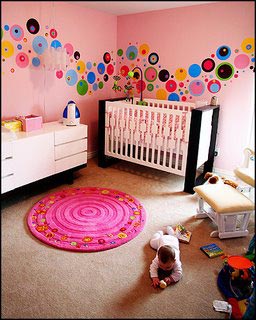No Kidding!
By Gargi Chakravarty | 13 Feb 2009
 Decorating your child’s room? Do keep in mind that a child's room is where s/he spends quality time, plays, studies and retreats to. And if your child has begun expressing his feelings,then his opinion counts! Yes its time to involve him in the process of designing!
Decorating your child’s room? Do keep in mind that a child's room is where s/he spends quality time, plays, studies and retreats to. And if your child has begun expressing his feelings,then his opinion counts! Yes its time to involve him in the process of designing!
Our surrounding can strongly influence our ideas, thoughts and morale, and this is more so with a child who is impressionable. So we need to be extra careful when it comes to designing a child's room.
You can use your creativity while decorating a room to reflect that signature style of yours, but when it comes to designing your child's room, keep in mind your child's age, personality, spirit, temperament, likes and dislikes so that the décor mirrors your child's individuality.
Always be careful in choosing colour for your child's room. Children often prefer brighter shades of colours but also tend to get bored quite easily. So try selecting subdued shades, however you can experiment by using bold colours in small doses. Pastel colours tend to induce positive vibes. Interesting drawings and patterns on the walls can also make a difference. Wallpapers, stencils and faux finishings can be chic and playful. You can even decorate the walls with drawings based on your child's fantasy and interests.
Furniture can be painted in vibrant colors to avoid the monotonous wooden appearance. Now safe, non toxic and colourful plastic furniture is also available. This furniture is light and less likely to hurt the child. It is also less expensive than wood furniture. Keeping in mind that you need to change it often, this may not be a bad idea.
Curtains for windows and doors must complement the colour scheme and overall theme of the room. Window covering chosen for a child's room must be safe, functional, charming and colourful. You may use fascinating appliques, ribbons, bright borders etc. to make the curtains attractive. To avoid possible injuries avoid using long drapery as your child could easily grab and pull them down.
|
Using carpets and fluffy doormats adds an element of fun to the flooring. Other accessories that will tickle your child are theme clocks, calendars, name plaques, wall hooks, wall hangings, paintings or even bathroom accessories. A wide range of these accessories are available in the market.
Children love to collect things and hate to part with them. Thus keeping their room in order may appear to be an inconceivable task. This is where thoughtfully created furniture is handy. Boxes hidden under the bed, a chest of drawers in a closet, desks or tables provide adequate storage facility. Shelves and wall hooks may also prove helpful to keep things in place. School bags and clothes can be conveniently hidden behind the doors and give the room a neat and tidy appearance.
The key factor in designing a child's room is the necessary safety measures, which include: proper ventilation, furniture without sharp edges, keeping dangerous things out of reach and keeping things of everyday use within your child's reach.
Your efforts and hard work will be well worth it when you see how your child truly enjoys and cherishes spending time in his designer room!






























